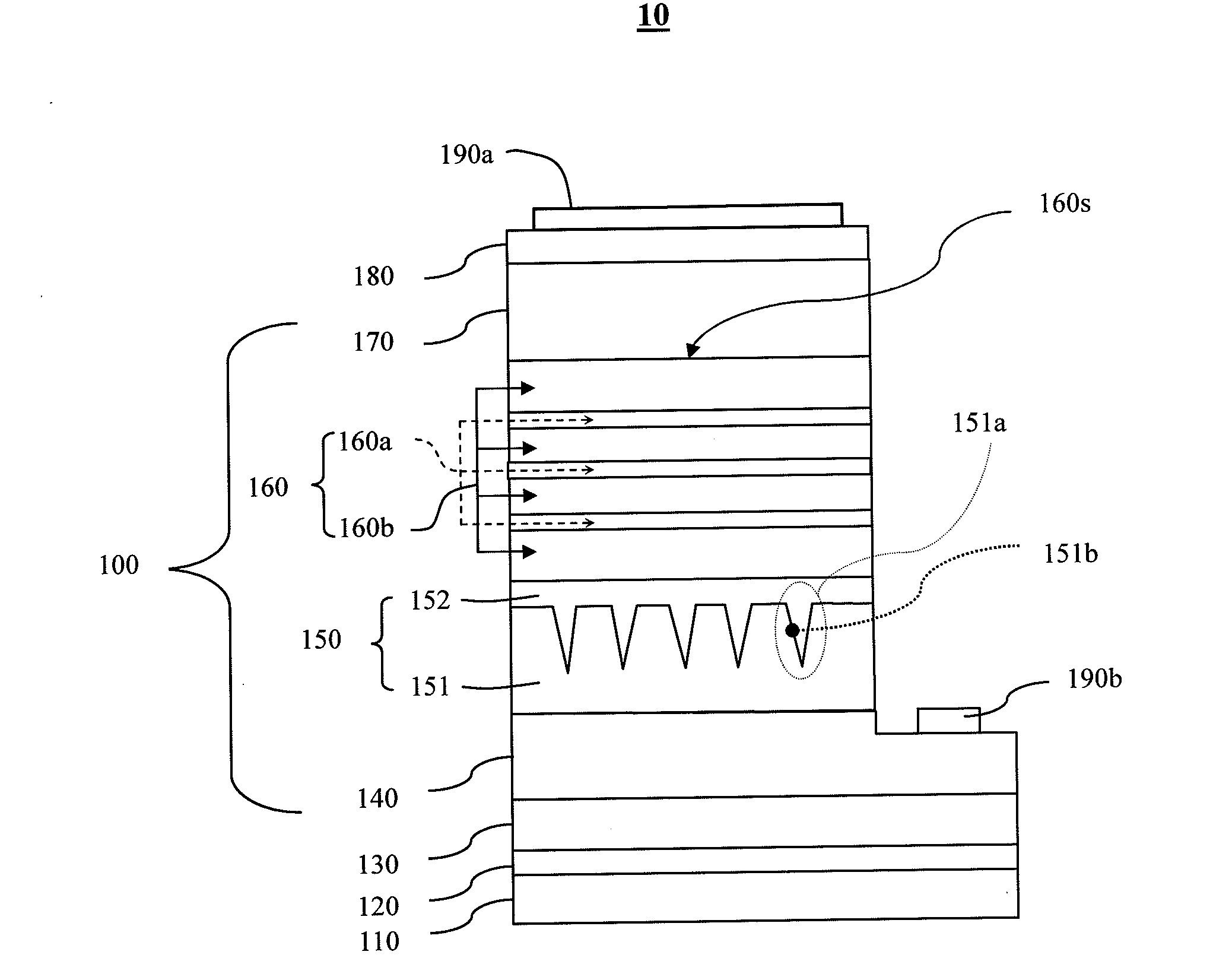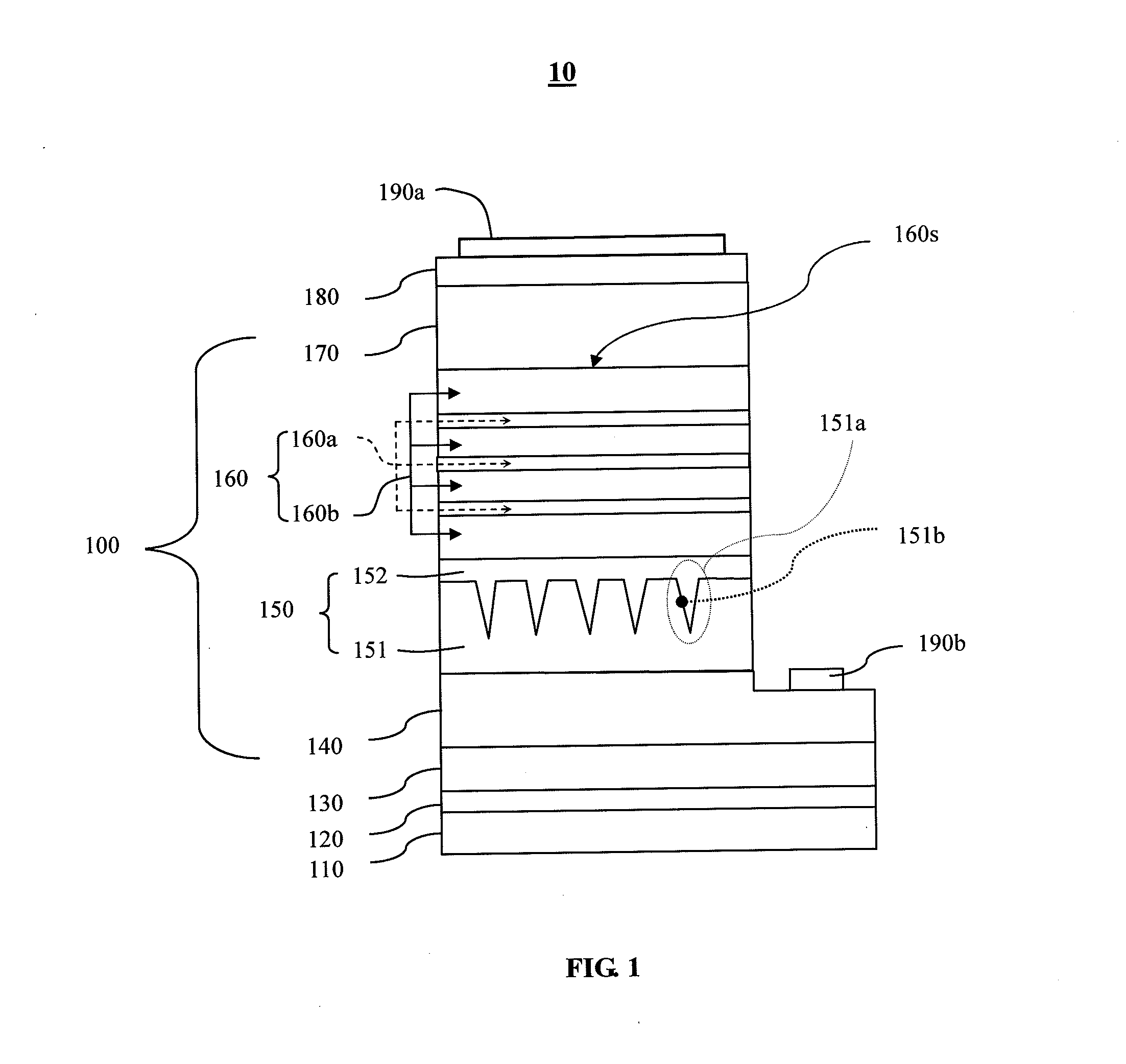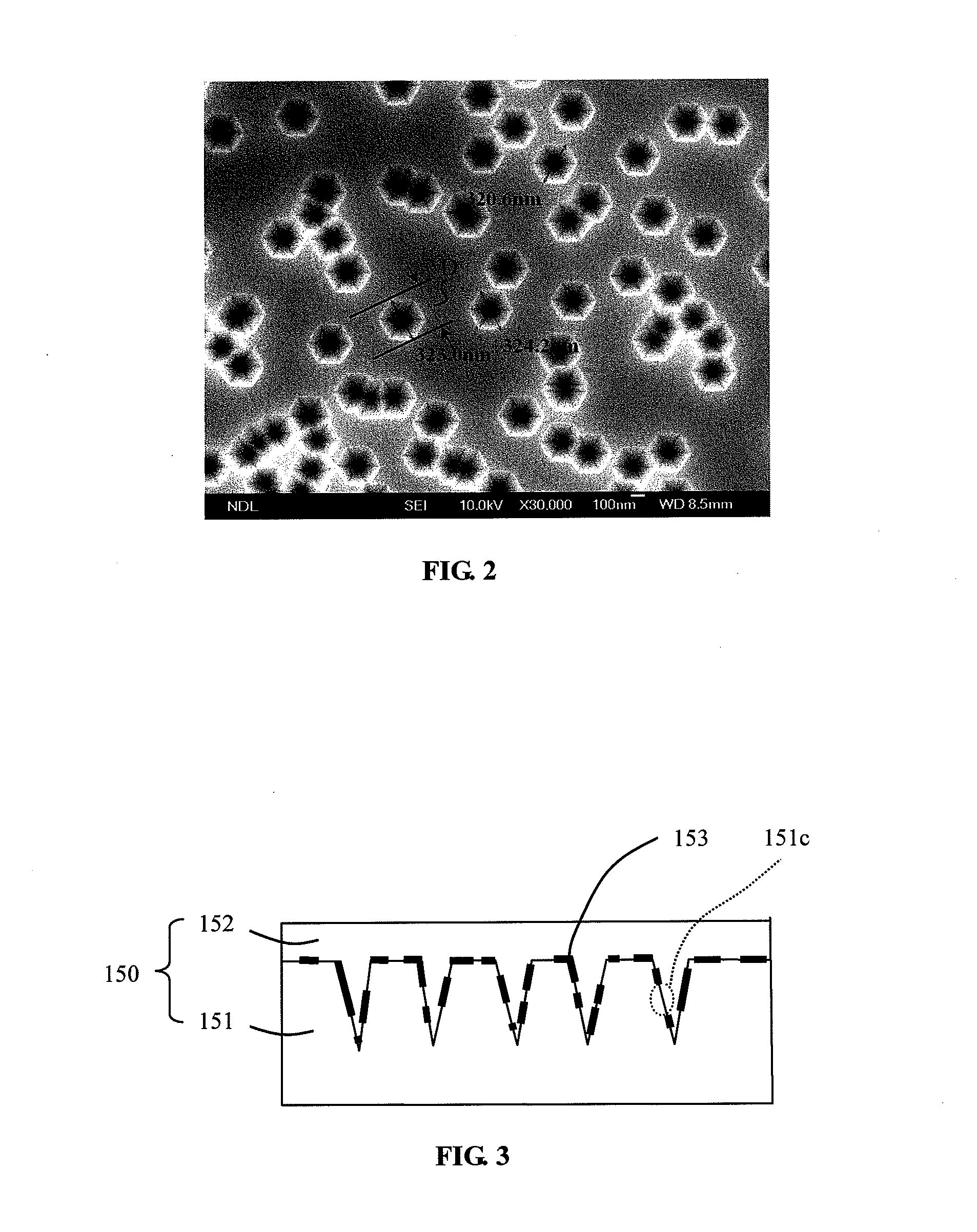Light-emitting diode with strain-relaxed layer
a light-emitting diode and strain-relaxed technology, which is applied in the manufacture of semiconductor/solid-state devices, semiconductor devices, electrical apparatus, etc., can solve the problems of reducing the iqe, drooping effect, and undesirable built-in electric field of led which employs nitride films along the polar c-direction of a sapphire substra
- Summary
- Abstract
- Description
- Claims
- Application Information
AI Technical Summary
Problems solved by technology
Method used
Image
Examples
Embodiment Construction
[0009]FIG. 1 illustrates an embodiment of present application. The light-emitting diode 10 is formed on a substrate 110, for example, a sapphire substrate. On the substrate 110, a buffer layer 120 is formed. The buffer layer 120 is a layer of GaN or AlN grown at a temperature, for example, 500° C.˜650° C. On the buffer layer 120, an un-doped GaN layer 130 is formed. On the un-doped GaN layer 130, a main structure 100 is formed.
[0010]The main structure 100 in this embodiment includes a first conductivity type semiconductor layer 140, a second conductivity type semiconductor layer 170. For example, the first conductivity type semiconductor layer 140 is n-type, and the second conductivity type semiconductor layer 170 is p-type. And between the first conductivity type semiconductor layer 140 and the second conductivity type semiconductor layer 170, an active layer 160 is disposed. An example for the active layer 160 is a multi-quantum well structure comprising a plurality of quantum wel...
PUM
 Login to View More
Login to View More Abstract
Description
Claims
Application Information
 Login to View More
Login to View More - R&D
- Intellectual Property
- Life Sciences
- Materials
- Tech Scout
- Unparalleled Data Quality
- Higher Quality Content
- 60% Fewer Hallucinations
Browse by: Latest US Patents, China's latest patents, Technical Efficacy Thesaurus, Application Domain, Technology Topic, Popular Technical Reports.
© 2025 PatSnap. All rights reserved.Legal|Privacy policy|Modern Slavery Act Transparency Statement|Sitemap|About US| Contact US: help@patsnap.com



